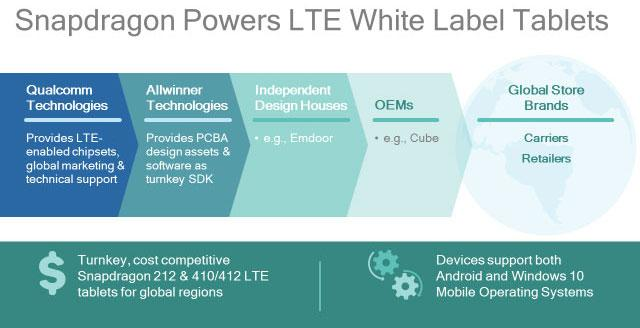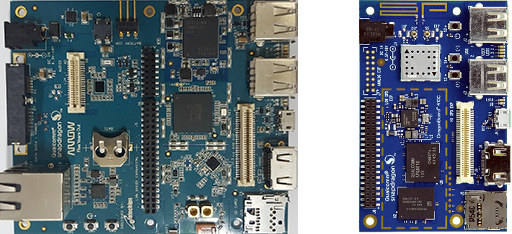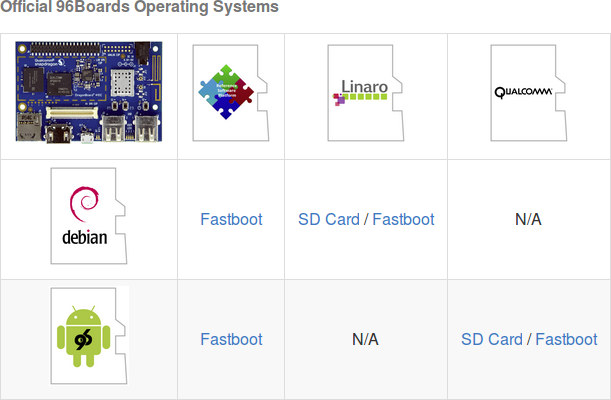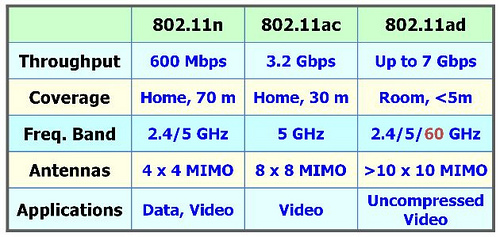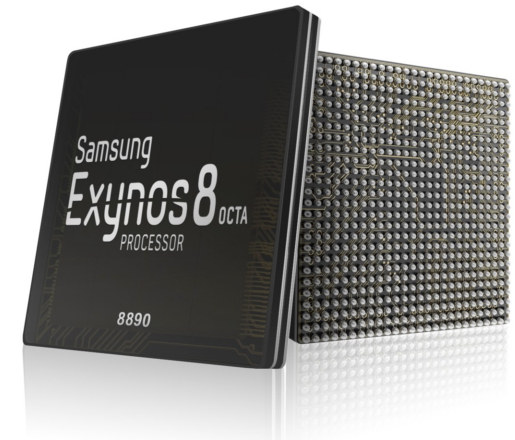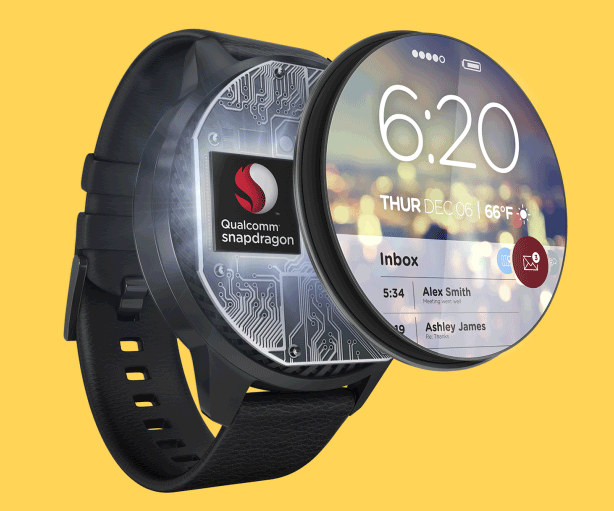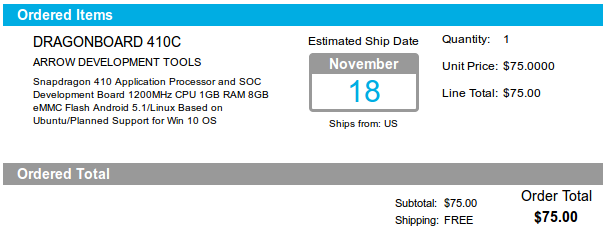Allwinner, a leading tablet SoC vendor, and Qualcomm have decided to collaborate, and introduced three new LTE tablet reference designs based on Qualcomm Snapdragon 425, 430, and 435 available to Chinese OEMs, on top of Snapdragon 210, 212 and 410 designs released last year. The full technical technical details about the reference designs are only available to OEMS who signed an NDA, but the key specifications are as follows: SoC – Qualcomm Snapdragon 420, 430, 435 application processors System Memory – 2G DRAM Storage – 32GB internal memory Connectivity – CAT 6 LTE band The tablet will run Android, but Windows 10 is also being worked on. The agreement only covers tablets, so Allwinner will not be involved in LTE smartphones. Since both Allwinner and Qualcomm are silicon vendors, and competitors, you may wonder why they’ve partnered. Allwinner only provides WiFi and Bluetooth tablets with their own processors, so partnering with Qualcomm allows then to […]
Qualcomm DragonBoard 600c 96Boards Development Board Includes Ethernet and SATA
A few weeks ago, I was informed that some code about DB600c board powered by Qualcomm Snapdragon 600 processor (APQ8064T) was making it into mainline Linux, and more recently I found a website listing DragonBoard 600c with a low resolution picture of the board. While we don’t have the complete specifications yet, the form factor of the board is quite interesting, as we’ll find the typical 96Boards CE form factor on the right, and some extra interfaces on the left with Ethernet and SATA. It turns out, as we’ll see below, it’s perfectly compliant (hardware wise) with 96Boards CE “Extended Version” specifications. Preliminary specifications of DragonBoard 600c board: SoC- Qualcomm Snapdragon 600 (APQ8064 Fusion 3) quad-core Krait processor @ 1.7 GHz with Adreno 320 GPU @ 400MHz System Memory – 1GB or more RAM (TBD) Storage – eMMC Flash + micro SD slot + SATA port Video Output – HDMI […]
Debian on DragonBoard 410c Development Board
I purchased Qualcomm DragonBoard 410c development board last year, and first tested it and run some benchmark on the 96Boards compliant hardware with Android. I found that it was still work-in-progress, and decided to wait before trying Debian on the board. I’ve now done so, and will report by experience installing Debian Linux, playing with the board, and running Phoronix benchmarks to compare it to other ARM Linux boards. Installing Debian on DragonBoard 410c The first challenge is to navigate through the documentation that is not always clear or up-to-date. I eventually ended up on DragonBoard 410c Wiki on Github. You then have to decided which image you want. While there are two official operating systems with Android and Debian, you can three “entities” releasiong their own images. For Debian specifically, you have the Linaro image, and Reference Platform Build (RPB) image. I could not find any changelog or known […]
Linux 4.5 Released – Main Changes, ARM and MIPS Architectures
Linus Torvalds released Linux Kernel 4.5 on Sunday: So this is later on a Sunday than my usual schedule, because I just couldn’t make up my mind whether I should do another rc8 or not, and kept just waffling about it. In the end, I obviously decided not to,but it could have gone either way. We did have one nasty regression that got fixed yesterday, and the networking pull early in the week was larger than I would have wished for. But the block layer should be all good now, and David went through all his networking commits an extra time just to make me feel comfy about it, so in the end I didn’t see any point to making the release cycle any longer than usual. And on the whole, everything here is pretty small. The diffstat looks a bit larger for an xfs fix, because that fix has […]
The First Devices and Routers with WiFi 802.11ad Delivering Up 7Gbit/s Transfer Rates at 60 GHz Will Be Available This Year
802.11ad is the latest and fastest WiFi standard working in the 60 GHz band and delivering up to 7 Gbit per second data transmission rates. The 60 GHz frequency band offers both advantages and disadvantages because it does not penetrate through walls nor water, meaning it can only be used within a room limiting the range, but at the same time it’s more secure since it cannot be snooped from the outside, and for people who worry about health effects it does not penetrate the human body. 802.11ad routers will also be able to switch to 2.4 and 5.0 GHz frequency bands in order to go through walls. The table above nicely summarize the key features of 802.11ad over 802.11ac and 802.11n, however the throughput row shows the theoretical maximum throughput, but in practice, using 802.11ac as example, clients are often limited to 433 or 866 Mbps, and distance and […]
Samsung Exynos 8890 Processor with Custom Exynos M1 and ARM Cortex A53 Cores Benchmarked
When Samsung announced Exynos 8890 processor, it promised 10% lower consumption and 30% high performance compared to Exynos 7 Octa. The company also said it make its own custom ARMv8 cores for the new, but at the time details were limited. Anandtech has now published more information, and Exynos 8890 octa-core processor will make use of four Exynos M1 custom cores combined with four low power ARM Cortex A53 cores, combined with a Mali-T880MP12 GPU. Exynos 8890 key features: Low power cores – 4x ARM Cortex A53 cores @ 1.586GHz High performance cores – 2x Exynos M1 @ 2.60 GHz, 2x Exynos N1 @ 2.29 GHz; If 4 cores are running at the same time: 2.29 GHz maximum Memory – 2x 32-bit LPDDR4 @ 1794MHz; 28.7GB/s bandwidth GPU – Mali-T880MP12 @ 650 MHz Manufacturing process – Samsung 14nm LPP Now that Samsung Galaxy 7 has been announced with Exynos 8890 […]
Qualcomm Announces Snapdragon Wear 2100 for Smartwatches, 3 New Cortex A53 Mobile SoCs
Qualcomm has unveiled four new Snapdragon processors with three quad and octa core Cortex A53 processors for smartphones with 4G LTE connectivity, and a new wearables SoC with lower power and, area compared to Snapdragon 400 series processor often used in smartwatches. Snapdragon Wear 2100 SoC is the first processor part of Qualcomm Snapdragon Wear, of new platform targeting wearable devices, with the company listing the following highlights: Quad core Cortex A7 processor @ up to 800 MHz or 1.2 GHz Adreno 304 GPU 30% smaller than Snapdragon 400 25% percent lower power than Snapdragon 400 Integrated, ultra-low power sensor hub Available in both tethered (Bluetooth and Wi-Fi) and connected (4G/LTE and 3G via X5 LTE modem) pin-to-pin compatible versions The SoC supports Android Wear, and Android, and should be found in smart watches, smart bands, smart eyewear and smart headsets. Snapdragon Wear 2100 and other Snapdragon Wear products are […]
DragonBoard 410c Development Board Quick Start Guide and Android Benchmarks
Linaro’s 96Boards initiative was announced in February with the introduction of Hikey board, and while progress has been rather slow, there are now two boards available for sale: Lemaker Hikey and Qualcomm Dragonboard 410c. The main advantage of these board is that 96Boards is not only an hardware specification, but also a software specifications that mandate most code to be open source, with recent versions of Linux and U-boot, and in the case of Dragonboard 410c work is being done with Freedreno open source GPU drivers. Now that I’ve got a board I’ll explain my experience with the purchasing process, take a few pictures, and show how to get started with Android, and install the latest version, before running a few benchmarks. Ordering DragonBoard 410c Development Board I normally don’t like purchasing from North American and European distributors, because of the potential documentation involved to comply with silly laws, high […]


